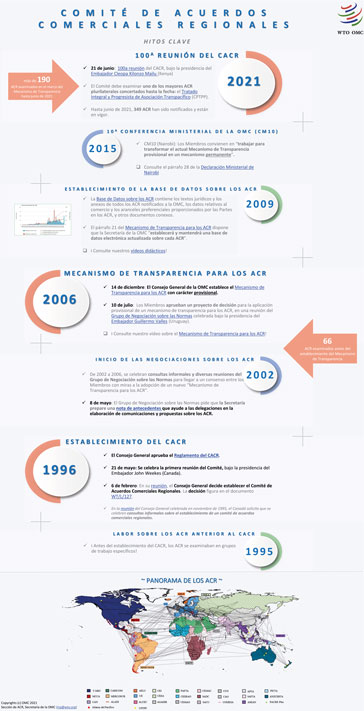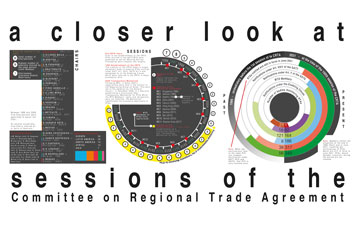More
“There has always been a close relationship between RTAs and the multilateral trading system,” Director-General Okonjo-Iweala said at the Committee's 100th session since it was first established by the General Council in 1996. “The work done by the Committee helps us understand how this relationship is evolving and is a regular reminder of how important it is for RTAs and the multilateral trading system to work towards the same goals,” she said, noting that over 190 RTAs have been reviewed in the Committee.
All 164 WTO members are party to at least one RTA and estimates suggest that close to 20% of global merchandise trade occurs between RTA partners on the basis of preferential tariff rates. Over 75% of global trade, on the other hand, occurs on most-favoured-nation (MFN) terms, underscoring the continuing commercial importance of multilateral agreements at the WTO.
“RTAs today go beyond market access in goods and services and related WTO rules,” the Director-General said. “The work of the Committee in considering these more complex trading relationships is especially valuable. Indeed, today you will be considering one of the largest and most complex RTAs, the CPTPP,” she said. The full speech can be accessed here.
The CPTPP is currently in force for seven of the 11 parties. It entered into force on 30 December 2018 for Australia, Canada, Japan, Mexico, New Zealand and Singapore and then on 14 January 2019 for Viet Nam. Singapore liberalized all its tariffs at entry into force while New Zealand will do so by 2024. Other parties will liberalize at least 95.9% of their tariff lines by 2039 at the latest. Moreover, CPTPP commitments in trade in services are in general broader than those under the WTO General Agreement on Trade in Services. The CPTPP also includes commitments in investment, government procurement, intellectual property, competition, state-owned enterprises, environment, labour, electronic commerce, and small and medium enterprises.
New Zealand and Japan introduced the Agreement at the meeting on behalf of the CPTPP parties. They said the CPTPP is a trailblazer at the forefront of many issues on the wider multilateral trade agenda. They noted the parties' continuing commitment to cooperate on economic recovery in the aftermath of the COVID-19 pandemic. They also reported that the parties decided on 2 June 2021 to start the accession process for the United Kingdom. Several members took the floor to welcome the Agreement and thank the parties for their replies to written questions.
The Committee chair, Ambassador Cleopa Kilonzo Mailu of Kenya, said the consideration of the CPTPP had allowed members to clarify a number of questions and thanked the parties for their responses.
Implementation of the RTA Transparency Mechanism
The chair further noted that 53 RTAs have still not been notified to the WTO. In addition, there are 72 RTAs involving WTO members and 34 involving non-members for which a factual presentation has to be prepared, counting goods and services separately. The factual presentation for six other services agreements are on hold pending the negotiations of services commitments (of these, one involves non-members). The steep increase in pending factual presentations is due to the new trade agreements between the United Kingdom and its partners following the UK's withdrawal from the EU.
The Chair said he had held consultations with delegations for which the RTA factual consideration remains delayed due to the lack of comments or data from the members involved and hoped that the outstanding information would be provided soon.
Share
Share
Problems viewing this page? If so, please contact [email protected] giving details of the operating system and web browser you are using.


